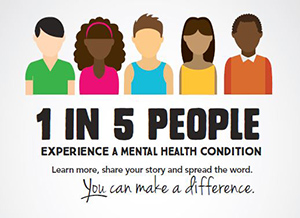July is for More Than the Beach!

Minority youth make about half as many mental health visits as white children, according to a 2016 study by Lyndonna Marrast, MD, and colleagues. They found that among African Americans, children saw mental health professionals 47 percent less and young adults 68 percent less compared to whites. Among Hispanics, children’s visits to mental health professionals were 58 percent less and young adults were 62 percent less compared to whites. The researchers note “psychiatric and behavioral problems among minority youth often result in school punishment or incarceration, but rarely mental health care.”
- In some cultures, hyperactivity and/or impulsivity in boys can be endorsed as typical by parents and viewed as gender preferred behavior.
- In some immigrant communities, a psychiatric diagnosis of ADHD is associated with isolation and social exclusion.
- Academic impairment and underachievement
- Untreated hyperactivity has been linked to long-term social and peer problems
- Poor listening skills and poor frustration tolerance can lead to tension at work and home, decreased intimate relationships, internalizing problems, and low self-esteem in adulthood
- One study found a connection between childhood ADHD and intimate partner violence in adulthood associated with conduct disorder
Recommendations from research
- More diverse and inclusive evidence-based research, through culturally responsive investigations using decolonizing, indigenous epistemologies, and research methodologies, in order to benefit ADHD research and produce a more inclusive and representative body of knowledge.
- Educators and practitioners working with persons affected by ADHD should assess their philosophies of practice and education. Integration of a culturally sensitive awareness of individual biases, with a focus on recognizing that patients from under represented communities may have experienced oppression, discrimination, and bigotry when dealing with mainstream institutions e.g. medicine.
- Meaningful partnerships with families and professionals working with and providing care for persons affected by ADHD to support social justice efforts that encourage access to culturally relevant services and shared decision-making among various ADHD stakeholders.
What has your experience been regarding minority mental health?
Did you know that July is Minority Mental Health Awareness Month? It is a time to recognize and address the disparities in diagnosis and treatment unique to minorities. And it’s also a time to consider the impact of those disparities to our community.
Other Articles in this Edition
July is for More Than the Beach!
